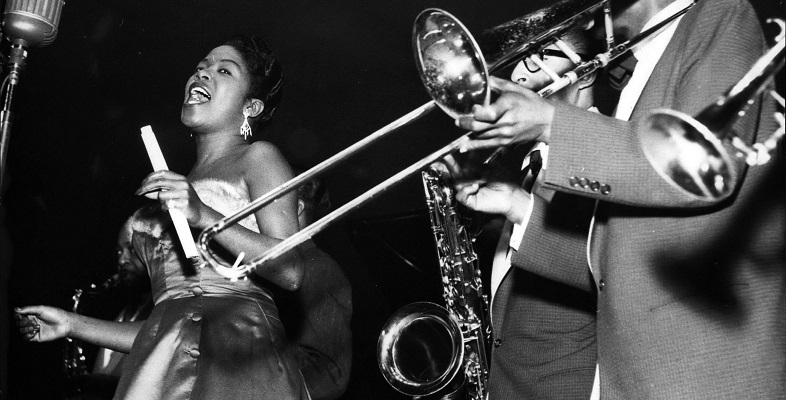5.1 Working with specialist terminology
The main sections of a khayāl performance are shown in Table 5, together with a summary of their characteristics.
| Section | Characteristics |
| ālāp | uses vocables, improvised, in free rhythm, without drummed accompaniment |
| bandiś | uses words, non-improvised, in strictly regulated rhythm, with drummed accompaniment |
Activity 5 Listening to ‘Ahir bhairav’
You will now try to listen for the elements of the form just introduced. Audio 5 [Tip: hold Ctrl and click a link to open it in a new tab. (Hide tip)] is a short performance of khayāl by Padma Talwalkar, created for the Music in Motion project directed by Dwijendra Bijey Biswas.
Listen to the opening of the recording and try to determine the moment when the ālāp ends and the bandiś begins, with reference to the characteristics summarised in Table 5. In the text box below, enter the track time. It should be possible to determine this simply by watching and listening to the recording.
You may hear some mechanical distortion (or similar) at the very beginning of the recording. It sometimes helps to pause and restart the recording.
Discussion
You should have been able to hear the drummed accompaniment begin with a flourish at 02:04. You may have also noted that words begin to appear in the video at 01:58 and guessed that these were the text of the bandiś. If so, congratulations! This is the moment the singer begins to sing the text of the song (the first word is written as rasiyaa in the video).
As the discussion suggests, it is 01:58 rather than 02:04 that truly marks the beginning of the bandiś (don’t worry if you did not catch this). This is the moment when the singer utters the first word of the text and cues the percussionist to start playing.
The remainder of the performance alternates between presentations of sections of the song and freer, more improvised episodes. You will know you are hearing a section of the song when words appear near the bottom of the screen in the video. The song has two parts, the first called the sthāyī and the second called the antarā. The parts of the song and their respective texts (spelled as in the video) are shown in Table 6. You can find a synopsis of the meaning of the text about halfway down the page about the performance on Music in Motion.
| Section of bandiś | Text |
| Sthāyī | Rasiyaa mhaara amalaaraa, Raataa maataa aavo ji |
| Antarā | Daasi thaadi mein janama janama ki, Mhaane nita chaaho ji |
From 01:58 to 03:22, the singer performs the sthāyī twice, first from 01:58 to 02:41 and second from 02:41 to 03:22. At 03:22, she moves into a freer, more improvised section. Unlike the ālāp at the beginning of the performance, this improvisation is in strict rhythm and supported by the percussion.
From 05:52 to 06:33, the singer performs the antarā. This has its own text and melody, and in accordance with convention moves into a higher vocal range than the sthāyī (this is especially evident from 05:57 to 06:06). The remainder of the performance is improvised, although it continues in strict rhythm and with the drummed accompaniment, and it occasionally incorporates words from the bandiś.
(You may notice that the image cuts out and the screen displays ‘See booklet for explanation’ during the last 43 seconds of the video. This is nothing to worry about, but you can find an explanation on the Booklet page of the Music in Motion website.)
Activity 6 Returning to ‘Ahir bhairav’
Listen to Audio 5 again while following Table 7 below, which outlines the structure of the performance along with track times and information about the characteristics of each section. You may find it difficult to tell purely by ear the difference between the parts of the performance that present the bandiś and the parts that are more improvised. Don’t worry too much about this; the video helps by showing the text whenever the singer is performing the sthāyī or the antarā. The key thing is to understand that during certain parts of the performance the singer is presenting a pre-existing song, and during other parts she is improvising.
| Section | Subsection | Track time | Improvised or composed | Rhythmically free or strict | Tablā | Text |
| ālāp | 00:00 | improvised | free | No | No | |
| bandiś | sthāyī | 01:58 | composed | strict | Yes | Yes |
| sthāyī | 02:41 | composed | strict | Yes | Yes | |
| improvisation | 03:22 | improvised | strict | Yes | (some words) | |
| antarā | 05:52 | composed | strict | Yes | Yes | |
| improvisation | 06:33 | improvised | strict | Yes | (some words) |
